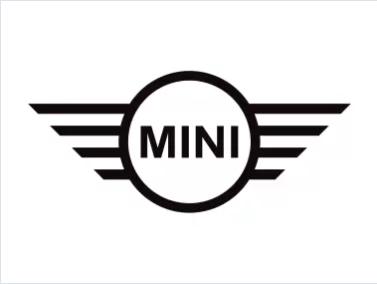Ignition Lock Repair: A Comprehensive Guide
When a lorry stops working to begin, it can be a source of aggravation for car owners. While many may right away assume it's a concern with the battery or starter, often the problem lies within the ignition lock system. Understanding ignition locks and how to repair them can save time and cash, allowing automobile owners to make informed decisions when dealing with ignition issues.
What is an Ignition Lock?
An ignition lock is an important element of an automobile's ignition system. It is the system that allows the motorist to start the car after inserting the key. The ignition lock serves a number of functions:
- Security: Prevents unapproved starting of the car.
- Control: Allows the chauffeur to manage the ignition system.
- Key Recognition: Activates the ignition only with the right key.
Depending on the car's make and model, ignition locks can differ considerably in style and functionality. They may be traditional key-based systems or modern-day electronic ignition systems.
Indications of Ignition Lock Issues
Comprehending the signs of ignition lock problems is vital for timely repairs. Here are some common symptoms:
- Key Won't Turn: Difficulty turning the key in the ignition can suggest an issue with the lock cylinder.
- Key Is Stuck: If the key gets stuck in the ignition or the lock won't release the key, it might signify internal damage.
- No Start After Turn: If the engine does not start after turning the key, the ignition lock or associated parts may be failing.
- Steering Wheel Locking: A wheel that locks all of a sudden may suggest problems with the ignition lock system.
Steps to Diagnose Ignition Lock Issues
Detecting ignition lock issues can appear overwhelming. However, following a systematic method can assist separate the issue:
- Check the Battery: Ensure the battery is in good condition. A dead or weak battery can mimic ignition lock issues.
- Examine the Key: Examine the key for signs of wear or damage that may avoid it from engaging the lock.
- Check the Ignition Lock: Gently wiggle the key while turning it to see if there is any modification in resistance.
- Take A Look At the Steering Column: Check for any blockages or damage in the guiding column that could impact the ignition lock.
It's a good idea to consult an expert mechanic if these actions do not resolve the concern.
Ignition Lock Repair: DIY vs. Professional Help
Repairing an ignition lock can be a DIY project depending upon the vehicle's complexity and the owner's mechanical skills. However, here are some elements to think about before continuing with a repair:
When to Consider DIY Repair
- Standard Mechanical Skills: Individuals with experience in automobile repair may effectively carry out simple repairs.
- Schedule of Tools: Access to tools like screwdrivers, wrenches, and perhaps a soldering iron may make DIY repairs possible.
- Cost: DIY repairs can minimize labor costs but might require buying replacement parts.
When to Seek Professional Help
- Complex Systems: Modern lorries frequently have actually integrated electronic systems that require specialized knowledge and diagnostic devices.
- Time Constraints: Professionals can finish repairs quicker, guaranteeing the lorry is back on the road without extensive downtime.
- Warranty of Work: Professionals typically ensure their repairs, offering assurance.
A Step-by-Step Guide to Repairing an Ignition Lock
For those thinking about a DIY method, here is a streamlined guide to fixing an ignition lock:
Tools Required
- Flathead screwdriver
- Phillips screwdriver
- Pliers
- Replacement ignition lock cylinder (if needed)
- Lubricant (such as graphite or WD-40)
Repair Steps
- Disconnect the Battery: Safety first! Always detach the automobile's battery before beginning any repair work.
- Eliminate the Steering Column Cover: Use the appropriate screwdriver to remove screws and detach the cover carefully.
- Gain Access To the Ignition Lock Cylinder: Locate the ignition lock assembly and utilize a paper clip or pin to release it from its housing.
- Check and Clean: Examine the ignition lock cylinder for wear or debris. Clean with lubricant and a soft cloth.
- Replace the Cylinder if Necessary: If the cylinder is harmed, remove it and replace it with a brand-new one.
- Reassemble: Carefully reassemble the steering column cover and reconnect the battery.
Table: Comparison of Ignition Lock Repair Methods
| Aspect | DIY Repair | Professional Repair |
|---|---|---|
| Cost | Lower (parts only) | Higher (labor & & parts) |
| Time | Longer (depends upon ability) | Faster (experience and tools) |
| Skill Level | Needs standard skills | Know-how needed |
| Warranty | None | Frequently consists of a service guarantee |
| Tools | Basic tools | Specialized devices |
Frequently Asked Questions About Ignition Lock Repair
1. Just how Repair Ignition does it cost to repair an ignition lock?The cost differs depending on the vehicle make, diagnosis, and whether you select a DIY method or professional help. DIY repairs can cost just ₤ 20-- ₤ 100 for parts, while professional repairs can range from ₤ 100 to ₤ 300 or more. 2. Can I drive my car if the ignition lock is not working?It's not
a good idea to drive a lorry with ignition lock issues. Doing so
could lead to more damage or jeopardize your security. 3. Is it possible to replace simply the ignition lock cylinder?Yes, in lots of cases,
you can replace simply the ignition lock cylinder without needing to replace the entire ignition system. 4. How can I avoid future ignition lock problems?Regular upkeep, using the right key, and lubing the
ignition lock regularly can assist prevent problems. In conclusion, understanding ignition lock repair can empower lorry owners to address this common problem efficiently. Whether going with a DIY technique or looking for professional assistance, taking timely action can spare motorists from unneeded hassle and costs.

